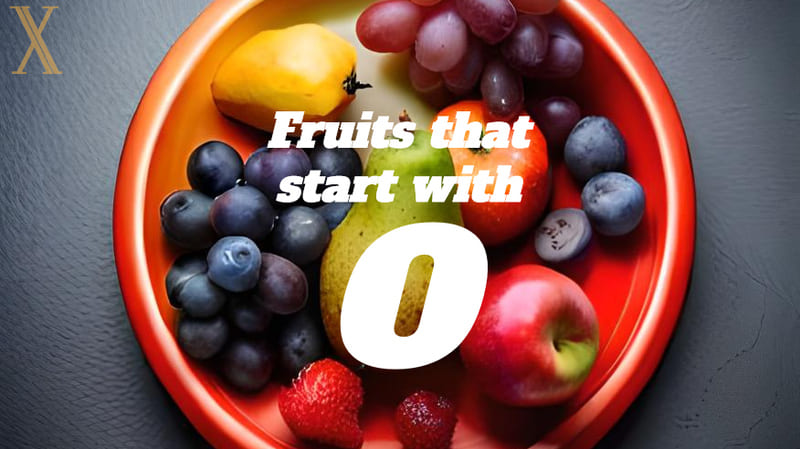
Do you know how many fruits stars with k? We do. In the following article you will see a list with a short description about all the fruits that start with k. Stay tunned.
Check the list a navigate easily using the table of contents.
Kabosu
Citrus sphaerocarpa, typically known as Kabosu lime, is a citrus fruit native to Japan. It is similar to lime in flavor but slightly sweeter and less acidic. Kabosu improves the taste of many dishes, especially cooked fish, sashimi, and hot pot dishes. It is also commonly used to flavor alcoholic beverages like shochu, a Japanese distilled spirit. Kabosu is rich in vitamin C, antioxidants, and other beneficial nutrients.
Kadota fig
Kadota figs, also known as White Kadota or Dottato, are a type of fig that originated in Italy, which produces two crops per season, primarily in California and Mexico. The fruit is oval-shaped, with a light green to yellowish-white color, and has dense, firm, and flexible flesh with an amber color. It has a sweet and syrupy taste and is harvested from mid-August to mid-November with a diameter of at least 40 mm. The figs can be consumed fresh or dried.
Kaffir Lime
Citrus hystrix called the kaffir lime or makrut lime, is a citrus fruit native to Southeast Asia. One of the main uses in Thai, Indonesian, and Malaysian cuisine is to flavor dishes like curries, soups, and salads. The fruit is small and round with bumpy green skin and a highly fragrant juice and zest. Kaffir lime leaves are also commonly used in cooking to add a distinctive citrus flavor, as you would use rosemary, but not only that since it is normal to use it in marinades, dressings, and garnish. Kaffir lime is also rich in antioxidants and other beneficial compounds.
Kahikatea
Dacrycarpus dacrydioides, commonly known as kahikatea or white pine, is a fruit native to New Zealand. It is a large tree that can grow up to 60 meters tall and produces small, edible, white berries with a sweet flavor. The Maori people in New Zealand traditionally use the fruit for medicinal purposes, such as treating sore throats and skin infections. In addition, the wood of the kahikatea tree is valuable for construction and carving.
Kakadu Plum
Terminalia ferdinandiana, most known as the Kakadu plum and also called the gubinge, billygoat plum, green plum, salty plum, or murunga, is a fruit native to Australia. It is a small green or yellow fruit with a tart flavor and high levels of vitamin C. Indigenous Australians traditionally use this fruit for medicinal purposes, such as treating colds and sore throats. Kakadu plum has uses in cosmetics and skin care products due to its high levels of antioxidants and other beneficial nutrients. It is also becoming increasingly popular as a superfood due to its health benefits.
Kaki
Diospyros kaki, the Oriental persimmon, Chinese persimmon, Japanese persimmon, or kaki persimmon, is a fruit native to China and Japan but is now widely cultivated in other parts of the world, including the United States and Europe. The fruit is typically round, orange (inside-outside), and has a sweet, slightly tangy flavor. It is commonly eaten fresh but also valuable for baking and cooking or dried and eaten as a snack. Kaki Persimmons are a good source of vitamin A, vitamin C, potassium, and fiber. They are also rich in antioxidants and anti-inflammatory compounds, making them a healthy addition to any diet.
Kandis
Rose Kandis or Kandis, scientifically known as Garcinia forbesii, is a Clusiaceae tree native to Southeast Asia, including Indonesia, Malaysia, Brunei, Papua New Guinea, Singapore, and southern Thailand. While it usually grows up to 20 feet, it can reach up to 60 feet in the wild. Its small, round, smooth fruit varies in color from red to white, with edible arils that taste like mangosteen. The tree has evergreen leaves that are elliptically shaped and produce nocturnal flowers that insects pollinate. It can thrive in forests up to 1,700 meters in elevation.
Kangaroo apple
Solanum aviculare, commonly called poroporo or pōporo (New Zealand), bumurra (Dharug), kangaroo apple, pam plum (Australia), or New Zealand nightshade, is a fruit native to Australia and New Zealand. The fruit is small and round and can range from green to purple. The Kangaroo apple is a nightshade family member closely related to tomatoes and potatoes. The fruit is not typically eaten raw; on the contrary, people cook it and use it in various dishes, such as sauces, chutneys, and jams. The Kangaroo apple is rich in vitamins and minerals. Additionally, it is a good source of antioxidants, making it a healthy addition to any diet.
Kantola
Momordica dioica, also known as spiny gourd or kantola, is a fruit from India and other parts of Asia. The fruit is small and green, with a spiky exterior and a soft, white-yellowish interior. Kantola is part of Indian cuisine, used in curries and other dishes. Due to its various health benefits is normal to use in traditional medicine, which includes aiding in digestion, improving liver function, and promoting weight loss.
Kapok
Ceiba pentandra, commonly known as kapok, is a fruit that grows on a tree native to Mexico, Central America, and the Caribbean. The tree is also known as the kapok tree or silk cotton tree. The fruit is a woody pod with a cotton-like fiber surrounding the seeds. The fiber is used for insulation, stuffing for pillows and mattresses, and even life jackets. The seeds are edible and are often used in traditional medicine to treat ailments such as coughs and fevers. The tree also produces beautiful white or pink flowers that bloom at night and attract pollinators such as bats and moths.
Karanda
Carissa carandas called Bengal currant, Christ’s thorn, Carandas plum, Karonda, Karanda, and Kanna, is a tropical fruit that grows on a small tree native to India, Pakistan, and Bangladesh. The fruit is small, about the size of a grape, and has a slightly sour taste. Jams, chutneys, and pickles are one of their uses. The fruit is also used in traditional medicine to treat digestive problems, fever, and skin disorders. The tree is easy to grow and has value as an ornamental plant in gardens.
Karkalla
Carpobrotus rossii is a succulent coastal groundcover plant native to southern Australia. It is known as karkalla, pig face, sea fig, and beach bananas. The globular purplish red fruit is about 2.5 cm (1 in) long and 1.5 cm (0.6 in) wide. The plant extract has significant in vitro antioxidant, antiplatelet, and anti-inflammatory activity.
Kawakawa
Piper excelsum, commonly known as kawakawa, is a small 20 feet tree endemic to New Zealand. It has a spicy, aromatic flavor, and the Maori use it in medicine and traditional cuisine. Kawakawa leaves can be brewed into tea or used as a seasoning in dishes such as stews and soups. The leaves also have medicinal properties and are believed to help with various ailments such as indigestion, arthritis, and colds.
Kayaba
Dovyalis caffra, Umkokola, Kei apple, Kayaba, Kai apple, or Kau apple, is a fruit native to southern Africa. It is a small, round fruit with thin, tough skin that is usually yellow or green. The fruit’s flesh is white and juicy, with a tart and slightly sweet flavor. The fruit is often used to make jams and preserves or eaten raw as a snack. The Kei apple tree is also used for its medicinal properties, specifically to treat ailments such as fever, diarrhea, and stomach problems.
Kedondong
Kedondong is the way people in Indonesia call the ambarella. It is a small, oval-shaped fruit usually eaten when it is unripe, as it has a sour and tangy flavor similar to a green apple. You can eat it raw or cooked, in salads, sauces, and pickles. It is also a popular ingredient in chutneys and curries. Kedondong is high in vitamin C, antioxidants, and fiber, with the belief to have various health benefits, including reducing inflammation and improving digestion.
Keitt
Keitt mango is a variety of mango native to Florida, USA. It is a large, oblong-shaped fruit with green skin that ripens to a yellow or orange. The flesh is sweet and juicy, with a rich, tropical flavor that mango lovers worldwide prize. Keitt mangoes are available during the late summer and early fall. Based on their taste, they are great for making smoothies, desserts, and other sweet treats. Additionally, looking for a good source of vitamins C and A? Keitt does have them, but also they are high in antioxidants and fiber.
Kepel
Stelechocarpus burahol, also known as Kepel or Burahol, is a fruit native to Indonesia and other areas of Southeast Asia. It is a small, round fruit with thick, waxy skin, usually green or yellow. The flesh is white and soft, with a sweet and aromatic flavor similar to a cross between a pear and a banana. Given its unique taste, people use kepel to make jams, jellies, and desserts, but obviously, you can eat it raw and fresh. In addition, this fruit is rich in antioxidants and vitamin C. As a consequence, there is a good chance that it has several health benefits, including boosting immunity and reducing inflammation.
Keule
Gomortega keule, also known as Keule or Queule, is a small green fruit native to Chile. It has a sweet and tangy flavor with a slightly floral aftertaste. The fruit is small and round, with a green color and thin skin. Inside, the flesh is juicy and fragrant, with tiny seeds that are easy to remove, which is perfect for creating a variation of wine called “chicha”. It is also known for its medicinal properties, as it is high in vitamin C and Mapuche native indians claim it has antibacterial and anti-inflammatory effects.
Key Lime
Citrus × aurantiifolia or C. aurantifolia, Key lime, also known as omani line or acid lime, is a small citrus fruit native to Southeast Asia. It has a tart and acidic flavor with a fragrant aroma. The fruit is small and round, with a green color and thin skin, and the flesh is sour since it is a kind of lime. Therefore, you can imagine people use it in cooking and baking for their distinctive flavor, especially in key lime pie. Of course, drinks, such as margaritas and mojitos, can have key lime as an ingredient. This fruit is rich in vitamin C and antioxidants, making them a healthy addition to any diet.
King coconut
King coconut, also known as Thambili, is a variety of coconut native to Sri Lanka. The fruit is oval-shaped and has a bright orange exterior with a pointed top. The flesh inside is jelly-like and translucent, with a sweet, nutty flavor. People consume the King coconut as a refreshing drink, and the juice is a popular beverage in Sri Lanka and other tropical countries. In addition, the water inside the fruit is rich in electrolytes, making it a natural sports drink that can help rehydrate the body.
Kinnow
Developed by Howard B. Frost at the University of California Citrus Experiment Station, the Kinnow is a mandarin hybrid grown in India and Pakistan. It is a cross between the ‘King’ and ‘Willow Leaf’ citrus cultivars and was made available for commercial cultivation in 1935. The Kinnow is a highly productive plant with up to 1,000 fruits per tree and can reach 35 feet in hot climates. The fruit is ready for harvest in January or February, has an easy-to-peel skin, and contains high levels of juice.
Kishu mikan
The Kishu mikan, a hybrid of mandarin oranges, is grown in Southern China and Japan and is also called Baby Mandarin, Tiny Tangerine, Mini Mandarin, and Kishu Mandarin. It has a thin, smooth orange skin containing 7-19 sections (Yes! 19 OMG). The mukakukishu type is seedless, while other varieties have seeds. This fruit is a good source of vitamin C and is used for seedless hybrid citrus production.
Kithul
Caryota urens, also known as kitul or kithul, is a type of palm tree that grows in Sri Lanka, India, and other parts of Southeast Asia. The sap of the kithul tree is used to make sweet syrup, a popular alternative to sugar. Kithul syrup has a distinctive flavor somewhat similar to caramel, which is why people use it as a topping for desserts, pancakes, and waffles. Another use of the syrup is to make kithul treacle, a thick, molasses-like substance used for baked goods. In addition to its use in cooking, kithul syrup is used in traditional medicine to treat various ailments, including coughs, colds, and digestive problems.
Kiwano
Cucumis metuliferus, also known as horned melon, kiwano, or African horned cucumber, is a type of fruit that is native to Africa but is now also grown in other parts of the world, including California and New Zealand. The fruit is oval-shaped and covered in a spiky, yellow-orange shell that can be cut open to reveal a bright green, jelly-like interior. The flesh of the kiwano is sweet and tangy, with a flavor often described as a combination of banana, cucumber, and lemon. Kiwano is usually eaten raw, either on its own or as a garnish for salads and other dishes. In addition, you can use it in smoothies and drinks or mixed with other fruits to make jams and preserves.
Kiwi
Kiwi, also known as Chinese gooseberry, is a type of fruit native to China but is now also grown in other parts of the world, including New Zealand and California. The fruit is small and oval-shaped, with a fuzzy brown skin that you should peel before eating. The flesh of the kiwi is bright green and juicy, with a tangy, slightly sweet flavor similar to that of a strawberry or a pineapple. Kiwis are often eaten raw or as a topping for yogurt, ice cream, and other desserts.
Knippa
Knippa, known as kenepa, genip, or mamoncillo, is a fruit native to Central and South America. The fruit is small and round, with a shiny, dark green skin that turns black when ripe. The flesh of the knippa is soft and juicy, with a sweet, slightly tart flavor similar to an olive or a plum. Knippas are often eaten raw or as a garnish for salads and other dishes.
Knobby Russet
Knobby Russet Apple is known for its distinctive, knobby appearance and rough, brown skin. The flesh is firm and crisp, with a sweet, slightly tart flavor similar to that of a Granny Smith apple. Knobby Russet Apples are often eaten raw or as a topping for salads and other dishes. As with any other apple, people use it in pies, crisps, and other baked goods or mixed with other fruits to make jams and preserves.
Kokum
Garcinia indica commonly known as kokum, is a fruit native to India and is widely used in Indian cuisine. It is a small, purple fruit that grows on a tree known for its sour and tangy taste. Kokum is used in many dishes, including curries, chutneys, and drinks. It is also used in traditional medicine to treat various ailments, including digestion problems and skin infections. In addition, Kokum is rich in antioxidants and is a good source of vitamin C.
Kola nut
The kola nut is a caffeine-rich fruit that grows on trees in tropical regions of Africa. It is a bitter fruit with a flavor similar to coffee or chocolate. Due to its caffeine content, the kola nut is a popular ingredient in many beverages, including colas and energy drinks. It is also used in traditional medicine to treat various ailments, including fatigue, depression, and headaches. In addition, the kola nut is high in antioxidants and contains compounds that some studies have shown to have anti-inflammatory and anti-cancer properties.
Korean melon
The Korean melon, also known as the Oriental melon, is a sweet and juicy fruit native to East Asia. It is a small, round fruit with thin, light yellow skin and white flesh. The flavor of the fruit is similar to that of a pear or a honeydew melon, and it is often eaten fresh as a snack or used in desserts. Korean melons are a good source of vitamin C and potassium. In addition, this fruit is low in calories, making them a healthy and refreshing complement to any diet.
Korean Pear
Pyrus pyrifolia, also known as Asian Pear, is a round, crisp, and juicy fruit with brownish-yellow skin native to East Asia. It is similar in shape to an apple and can grow to the size of a grapefruit. The texture of the flesh is crunchy, and the flavor is sweet and mildly acidic, with a slightly grainy texture. Korean Pear is a good source of dietary fiber, vitamin C, and potassium and is low in calories. It is commonly eaten raw or used in salads but can also be cooked, baked, or grilled.
Korlan
The korlan is a tree in the Sapindaceae family, closely related to other tropical fruits like rambutan, lychee, longan, and guinep. It produces round to oval drupes that hang in a loose cluster. Its scientific name is Nephelium hypoleucum.
Kowai
Coccinia grandis, also known as kowai, ivy gourd, or tindora, is a tropical vine part of Indian and Southeast Asian cuisine. The plant is also used in traditional medicine to treat various conditions, including leprosy, fever, and joint pain. In addition, scientists claim ivy gourd extracts help regulate blood sugar levels as research supports that compounds in the plant inhibit glucose-6-phosphatase, which regulates sugar metabolism. Kowai fruit is often cooked and eaten in curries or soups, and the immature fruit is used raw to make a fresh pickle.
Kuansu
Pandanus conoideus is a plant from the Pandanus family, native to New Guinea, commonly known as Marita or Kuansu in Papua New Guinea and Buah Merah in Indonesia. The fruit is rich in beta-carotene, and people cook it to make a red sauce called “marita sauce”. The plant is also used in folk medicine. Its culinary uses include being made into ice cream, pudding, taro, and drinks. The plant’s roots can also be used for construction materials and as bait for capturing birds and rats.
Kumquat
Kumquats are a type of citrus fruit native to China. Still, nowadays, they are produced in many parts of the world, including the United States. The fruit is small and oval-shaped, with a bright orange rind and a sour, tangy flavor. Unlike other citrus fruits, the kumquat’s skin is sweet and edible, while the flesh is sour.
We have a lot of content on kumquats. Still, I encourage you to check the benefits of kumquats, the culinary uses of kumquats, and how to grow kumquats.
Kundong
Garcinia parvifolia, also known as Kundong or Brunei cherry, is a tropical evergreen tree found in Borneo, Peninsular Malaysia, Sulawesi, and Sumatra. It grows to 33 meters tall and usually belongs to humid environments at 600-800 meters. Seeds propagate the tree and produce fruit in as little as four years. It is used for its bark, wood, leaves, and fruit. It has almost no waste since the bark produces resin, the wood is valuable for carving or furniture, people consume the leaves as a vegetable, and the fruit is edible raw or cooked.
Kutjera
Kutjera, also known as desert raisin or bush tomato, is a fruit native to Australia. The fruit is small and round, similar to a grape or raisin. It has dry, papery skin that is reddish-brown and has a sweet, tangy flavor. It is a common ingredient in traditional Aboriginal cuisine as a spice or flavoring in dishes such as stews, soups, and sauces. Kutjera is also known for its medicinal properties, as some people use it to treat various ailments such as colds, coughs, and sore throats.
Kwai Muk
Kwai Muk, also known as Guai Mok, is a tropical fruit that grows on a tree scientifically known as Artocarpus hypargyreus. It is native to Southeast Asia, particularly Thailand and Malaysia. The fruit has a round shape, and its size is about that of a small lime. The fruit’s outer skin is yellowish-brown and rough to the touch. The inner flesh is white, soft, and mildly sweet, similar to coconut milk. Kwai Muk is usually eaten fresh, either alone or with other fruits, and is also used in desserts such as ice cream, jellies, and cakes.
Kyoho Grapes
Kyoho grapes, a popular fruit in East Asia, are a cross between the Ishiharawase and Centennial grape varieties, created by Japanese viniculturist Yasushi Ohinoue in the 1930s and 1940s. The slip-skin grapes have blackish-purple skin, large seeds, and juicy flesh with high sugar content and mild acidity. They are typically served peeled as a dessert and are prevalent in Japan, Taiwan, mainland China, and Korea. Kyoho grapes are also used to make chūhai cocktails. China has the largest land area dedicated to growing Kyoho grapes, with over 90% of the world’s vines grown there.
-

The A-List of Fruits: A Journey Through Fruits that Start with A
-

Fruits that Start with B: A Guide to the Best of the Bunch
-

Discover the Sweet World of Fruits That Start with C
-

Fruits That Start with D: Discovering Exotic Flavors
-

15 Fruits That Start With E: A Delicious Guide
-

23 Fruits that Start with F: A Guide to Nutritious Options
-

Fruit Alphabet: Discovering Fruits that Start with G
-

Fruits that start with H: From Habanero Pepper to …
-

22 Fruits That Start With I: Nutritious and Medicinal Treasures
-

25+ Fruits that Start with J: A comprehensive list
-

35+ Fruits that Start With K (with a short description)
-

Fruits that Start with L: From Lablab to Lychee
-

The Mighty M’s: A Guide to Fruits That Start with M
-

Fruitful N: Discovering Exotic Fruits That Start With N
-

The Encyclopedia for the Fruits That Start with O
